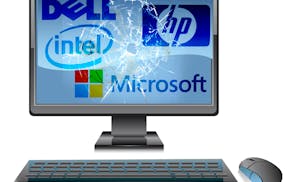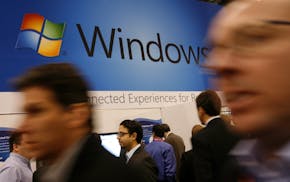Q: After reading your columns about problems with Windows 8 PCs that automatically upgraded to Windows 8.1 (see tinyurl.com/lvnfcp7CQ and tinyurl.com/ozmsgsu), I checked the Dell website to see if my wife's Windows 8 computer would be compatible if such an upgrade happened.
I followed Dell's directions and downloaded two new software drivers to make her PC compatible with Windows 8.1. But when I restarted the PC, the screen went blank and Windows 8 never worked again. What can I do?
Joe Porras, Redding, Calif.
A: Unfortunately, your laudable efforts to prepare for a Windows upgrade have themselves caused a problem. You've installed software drivers for Windows 8.1 on a PC that was still running Windows 8, which needed the drivers that the PC already had. But even though the PC won't start, it can be fixed, either by returning Windows 8 to functioning condition or by upgrading to Windows 8.1.
You can restore Windows 8 with a set of Dell's backup and recovery disks. When inserted into the PC's DVD drive, they change the software back to the way it was when you bought the computer. However, the restoration will erase the PC's programs and data.
Consumers can make their own backup and recovery disks directly from a Dell PC. If you previously made these disks, put the recovery one in the DVD drive, reboot the PC and follow the directions. If you didn't make the disks, you can get free copies of them from Dell, provided that your PC is under warranty (check your warranty duration at tinyurl.com/pdr4y3t.) To order the disks, see tinyurl.com/lx3thkx.
But if your PC is no longer under warranty, Dell won't provide the disks. In that case, you can get a free upgrade to Windows 8.1 from Microsoft. Using someone else's computer, download the free Windows 8.1 upgrade files from Microsoft to a DVD disk or a flash drive (see directions at tinyurl.com/bkpy97u.) The upgrade will not erase the PC's programs or data.
Q: When I use Microsoft's Internet Explorer to view some Yahoo websites, I get the message "this page can't be displayed." But Google's Chrome browser works fine. What's wrong?
Roberta Camm, Pembroke Pines, Fla.
A: Internet Explorer is being tripped up by new technology related to the expansion of the Internet.
Every device on the Internet has an IP (Internet Protocol) address that allows it to send and receive data. But because the Internet is growing, more addresses are needed. As a result, the Web is making a transition from IP Version 4, which today routes more than 90 percent of Internet traffic, to Version 6, which can handle more addresses for future Internet expansion. Yahoo and some other large websites use both IP versions, which can confuse Internet Explorer. Microsoft offers an automated fix for this problem at tinyurl.com/qg3j9ys.
E-mail tech questions to steve.j.alexander@gmail.com or write to Tech Q&A, 425 Portland Av. S., Minneapolis, MN 55488. Include name, city and telephone number.

Alexander: A beeping computer is telling you what's gone wrong inside

Alexander: How to stop deleted iPhone e-mails from coming back

Alexander: Refurbished PCs may need a BIOS update to use new components

Alexander: Windows 11 not always to blame for browser or e-mail problems

